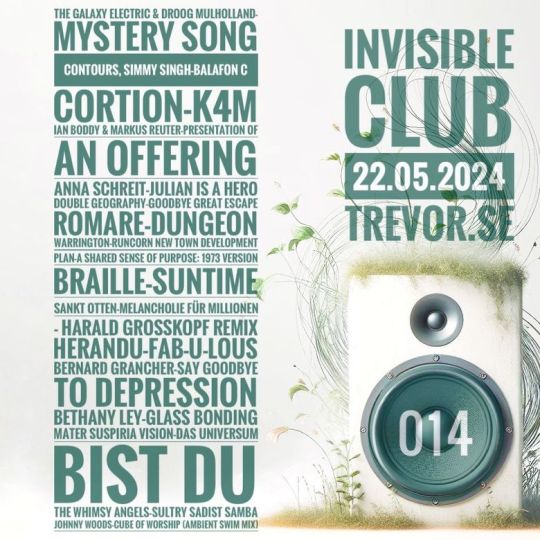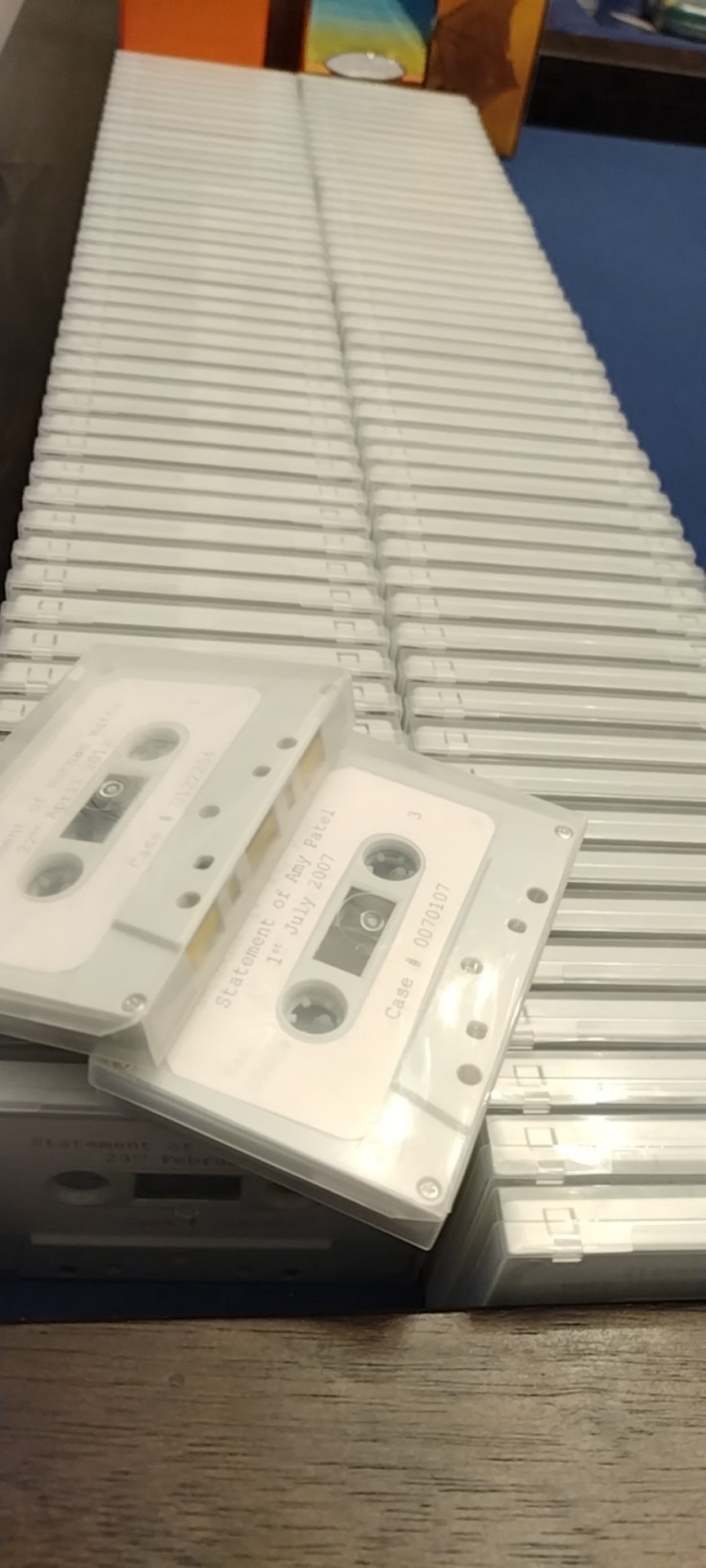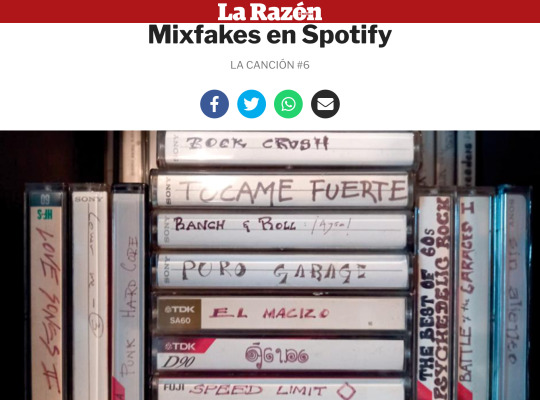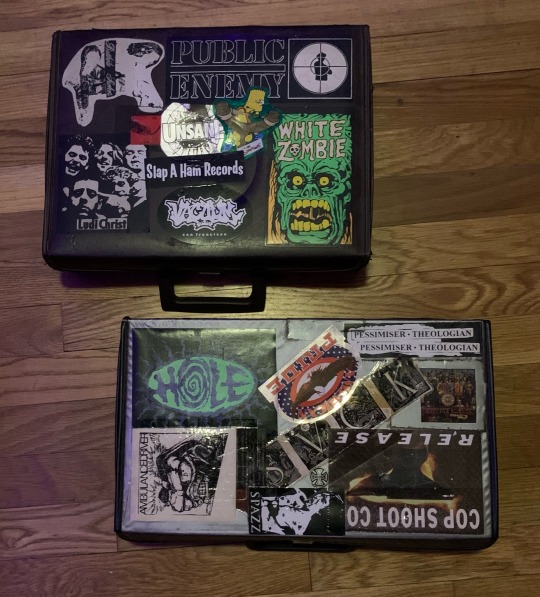#lou ottens
Explore tagged Tumblr posts
Text

Lou Ottens, inventor of the cassette tape. If it hadn't been for Lou, we'd have been forced to listen to the radio in our cars for many more years than we wanted to. Instead of making mixed tapes to woo our girlfriends, we'd have been forced to spend money on flowers and candy. When we took walks, we'd have had to sing to ourselves instead of listening to our Walkmans. And we'd never have been able to record The Clash or The Jam or Pretenders performing on the TV show Fridays using the little plug-in microphone set up on a chair in front of the 3 inch TV speaker. Lou was one of my heroes. Play a cassette today to honor Lou's memory. And be sure to have your pencil handy.
2 notes
·
View notes
Text

Felicidades !!! Hoy el casete cumple 60 años desde su primera aparición en 1963 ...
En aquella época fue inventado por el ingeniero holandés Lou Ottens que trabajó toda su vida profesional en la empresa Philips. Después que revolucionó el mercado musical, durante décadas marcó la industria musical, también gracias a la invención del Walkman en 1979, el reproductor de casetes para llevar. En aquella época, en prácticamente cada hogar había al menos un magnetófono o un walkman. Posteriormente, el casete fue reemplazado por el CD, que Ottens y su equipo también ayudaron a inventar.
Aunque durante mucho tiempo se creyó muerto, el casete sigue vivo hoy. Desde hace varios años está experimentando un resurgimiento. Todavía no existe un buen reproductor de casetes comercial "al día", pero estoy convencido de que volverá y que el casete encontrará su nicho y su lugar en el mundo porque los casetes también vuelven a ser populares entre los músicos. Ya es culto.
Meciéndose al ritmo de la nostalgia: el casete ha sobrevivido en el nicho 60 años después de su invención. Durante este tiempo se han vendido más de 100 mil millones de casetes en todo el mundo ...
28.08.2023 Museo del Tiempo Tlalpan, A.C.
Markus Frehner
#museodeltiempo #tlalpan #museos #cdmx #museums #mexico #historia #tecnología #tiempo #museum #history #technology #time
Imagen: El casete fue el invento de su vida: Lou Ottens en 2013. El ingeniero holandés falleció en marzo de 2021 a la edad de 94 años.
5 notes
·
View notes
Text
Louis Ottens, creador del cassette

Nacido el 21 de junio de 1926, Louis Ottens, ingeniero holandés, desarrolló la cinta de casete de audio y trabajó en el disco compacto (CD). Nacido en Bellingwolde, Países Bajos (m. 2021) Lodewijk Frederik Ottens (21 de junio de 1926 – 6 de marzo de 2021) fue un Ingeniero e inventor holandés, mejor conocido como el inventor de la cinta de casete y por su trabajo para ayudar a desarrollar el disco compacto. Ottens fue empleado de Philips durante toda su carrera. Aprovechando el éxito del EL 3585, Philips Hasselt comenzó a trabajar en planes para desarrollar una grabadora de casetes portátil. El objetivo de esta "grabadora de bolsillo", como se la apodó, era ser económica y pequeña, con un bajo consumo de batería pero una calidad de sonido razonable. Originalmente, Philips planeó trabajar con RCA y usar su sistema de cartucho de cinta RCA, pero Ottens descubrió que las dimensiones y la velocidad de la cinta del conjunto no lo hacían adecuado para el producto deseado. Philips finalmente decidió desarrollar su propio casete, con el de RCA como punto de partida. Ottens comenzó el diseño del casete cortando un bloque de madera para que cupiera en el bolsillo de su chaqueta. Este bloque de madera se convertiría en el modelo de lo que se convirtió en la primera grabadora de casete portátil, la EL 3300. Ottens dirigió un equipo de diez o doce trabajadores que tenían experiencia en el diseño de gramófonos y grabadoras para desarrollar el casete y su equipo. Mientras desarrollaban el casete, el grupo utilizó a menudo recursos y conocimientos de la cercana localidad de Eindhoven. En 1963, Philips decidió presentar públicamente el sistema de casete en la IFA de Berlín. Esta introducción no fue muy bien recibida de inmediato que no despertó mucho interés entre el mundo del audio. Sin embargo, se tomaron algunas fotografías del sistema, que luego se usarían en la producción de copias japonesas del sistema de Ottens, que eran notablemente más grandes que el original. Wilhelmus F.A. Heylands, ingeniero civil holandés e inventor del equipo de Ottens en Philips Hasselt, graduado en TH Aachen (Alemania), explicaba a menudo que la razón del avance de Philips con el casete compacto fue el hecho de que ofrecían esta patente y invención de forma gratuita a otros fabricantes de hardware similar como National y Sony. Sin esto, el "Compact Cassette" nunca se habría convertido en el estándar mundial. Heylands nació casualmente el mismo día que Lou Ottens.
1 note
·
View note
Text

Happy birthday Cassette!
Her canon birthday is August 30th, which is coincidentally on the day the cassette tape was introduced to the world by the Phillips company in 1962. Yes, her father is Lou Ottens (creator of the cassette tape)


(p.s. more lore— teen Cassette was obsessed with Garfield. She still is.)
Both of these photos were taken in a ten year span methinks. Cassette’s canon age is around her 20s lmao (time is weird in the RPS universe so I made her age ambiguous). Anyways enough rambling, happy birthday to my most successful oc :)
#rock paper scissors#rock paper scissors oc#nick rps#cassette rps#cassette#who up cassetteposting???#oc#original character#cartoon#art#digital art#firealpaca#uhhh yea happy birthday child#I have so much fanart of her it peaked to 100 pics today#yes I’m accepting fanart gladly still#nickelodeon
17 notes
·
View notes
Text
Hello and welcome to today's episode of Nerd Knowlege with Kari!
Today's theme was suggested by @rat-in-a-suit, shout out to you :D
Today we will talk about Cassetes!

I am very bold to assume that not everyone knows what this is so here's a quick definition:
a sealed plastic unit containing a length of audio tape, videotape, film, etc. wound on a pair of spools, for insertion into a recorder, playback device, or other machine

(Definition from Oxford Languages Dictionary)
Now that you have a brief idea of what it is I want to explain to you how they're built, who came up with them, and when they started to be sold.
Compact Cassettes have two miniature spools between those there is the magnetically coated, polyester-type plastic film (Also called magnetic tape. Side fact: The original magnetic material was based on gamma ferric oxide Fe2O3).
The audio is recorded onto it by using the incoming sound wave, having been converted by a microphone into an electrical signal, which produces a time-varying magnetic field in the gap of the magnet. As the tape moves past the recording head, the powder is magnetized in such a way that the tape carries a record of the electric signal.
Now that that is out of the way we can finally discover who came up with these beautiful sound devices.
The Cassette tape was invented by a Dutchman called Lou Ottens (21.06.1926 - 6.03.2021) and his team at the company Phillips, they released the first Cassette in 1963.
Short after the Walkman was released to the market, a Walkman is a portable cassette player, they were brought to the market by Sony (who else honestly) on the 1st of July 1979 (The model was named TPS-L2 which I found on eBay for a whopping 2000 Euros or 2177,50 US Dollars)
Shortly after the Cassette, we got CDs then iPods and now we have online streaming platforms too! This makes music easily accessible to everyone!
So put on your favorite music and enjoy the rest of your day or night!
Logging off,
Kari
[21/07/2024]
#nerdknowledgewithkari🪷#music#songs#history#technology#cassette#walkman#80s#helpwhyistheTPSL2soexspensive#cds#music history#tech
12 notes
·
View notes
Text

Invisible Club 14
22.05.2024
Intro 00:00 The Galaxy Electric & Droog Mulholland-Mystery Song 01:07 Contours, Simmy Singh-Balafon C 03:58 cortion-k4m 12:25 Ian Boddy & Markus Reuter-Presentation Of An Offering 15:22 Anna Schreit-Julian Is A Hero 26:30 Double Geography-Goodbye Great Escape 32:41 Romare-Dungeon 37:44 Warrington-Runcorn New Town Development Plan-A Shared Sense of Purpose: 1973 Version 40:56 Braille-Suntime 45:10 Sankt Otten-Melancholie für Millionen – Harald Grosskopf Remix 48:11 Herandu-Fab-U-Lous 51:21 Bernard Grancher-Say goodbye to depression 56:59 Bethany Ley-Glass Bonding 1:05:34 Mater Suspiria Vision-Das Universum bist Du 1:09:28 The Whimsy Angels-Sultry Sadist Samba 1:17:06 Johnny Woods-Cube of Worship (Ambient Swim Mix) 1:18:35 Outro 1:22:25
#The Galaxy Electric#Droog Mulholland#Contours#Simmy Singh#cortion#Ian Boddy#Markus Reuter#Anna Schreit#Double Geography#Romare#Sankt Otten#Harald Grosskopf#Warrington-Runcorn New Town Development Plan#Braille#Herandu#Bernard Grancher#Bethany Ley#Mater Suspiria Vision#The Whimsy Angels#Johnny Woods#Subexotic Records#Music From Memory#Muzan Editions#DiN#Compost Records#Invisible Inc.#Castles In Space#Hotflush Recordings#Hive Mind Records#Astra Solaria Recordings
3 notes
·
View notes
Text
Reblog in memoriam of the man who made this project possible, Lou Ottens, inventor of the audio cassette tape
It is complete! After obtaining a new tape deck (and 146 re-records because the quality difference was day and night) I have finally finished recording all 200 episodes of The Magnus Archives on tape. Now all that is left is the "painful" task of having to listen to them all and confirm the recordings are good ;)

4K notes
·
View notes
Text
THE STORY OF THE CASSETTE: LOU OTTENS AND HIS INVENTION THAT MADE MUSIC TRAVEL
Since its creation in 1963, it became a revolutionary object for the world. Its reign lasted until the arrival of the CD in the 80s.
In 1963, Lou Ottens created a small plastic box, 10 centimeters by 6, that would change the world forever. As the head of engineers at the Dutch company Hasselt, owned by Philips, he was in charge of developing a prototype to store and play music that, ten years later, became popular worldwide under the name of cassette.
Ottens was obsessed with the idea of creating compact technology to play music. At that time, songs were played on vinyl records, which were too large and fragile to adapt to the growing mobility of people. Music was always a static pleasure, but this prototype promised to bring movement to it.
Cassette means "small box" in French and refers to the container that holds two small reels connected by a magnetic tape. Music is recorded on that tape and can be played on both sides, requiring listeners to take the cassette out of the player to flip it over and offer the machine the now-famous Side A and Side B.
By 1964, cassettes were already being sold in Europe, and four years later, they landed in the United States. It was a new and still rudimentary object, but it quickly attracted enthusiasts eager to turn it into an indispensable ally for music.
In 1971, noise reduction was improved through the use of chromium dioxide tape. The sound quality improved significantly, but true popularity came with a Japanese technology that turned listeners into active participants.
The Japanese company Maxell released blank tapes, which unleashed creativity. Users could now record their own music: copy entire albums, create their own compilations, and even record their own voices with home recorders. The cassette opened up a world of possibilities, where the listener was in control.
Throughout the 70s and 80s, cassettes ruled the music world. Unlike vinyl records, they were sturdy and compact. They could be carried in backpacks and pockets, shared easily, and withstood all the challenges of travel. Additionally, they could be customized to the user's taste, creating personalized mixtapes that were the pioneers of today’s playlists.
With their proven popularity, various companies worked to improve Ottens' invention. The American company Dolby worked on noise reduction, and in 1978, pure metal particle tapes were created, an advancement that preserved sound quality for decades without alterations.
Just one year later, another technological breakthrough linked to the cassette revolutionized the way people listened to music. On July 1, 1979, the Walkman was born: a portable, battery-powered player that introduced a habit still present today—listening to music while walking, in public transportation, or in a waiting room, all individually through the use of headphones.
In the 1980s, cassettes were omnipresent in car stereos, Walkmans, and home recorders. Blank versions flourished, allowing the creation of compilations or "mix tapes," and they flooded record store windows with the latest releases from the most popular artists.
However, it was Lou Ottens himself who participated in the creation of the cassette's successor: the compact disc or CD, a new technology that gradually gained traction with consumers and eventually dethroned the cassette as the new king of sound reproduction.
In 1981, Sony and Philips launched CDs to the market. Discs made from polycarbonate and coated with aluminum, making the small cassette box from the 70s seem large by comparison. Weighing only 30 grams, they could store up to 650 megabytes, making them first dominant in the world of music and later in the realm of computing.
CDs slowly but surely gained dominance among users. Until the 1990s, compact discs and cassettes coexisted in record stores, and many still preferred the Walkman, even when more modern technologies like the Discman were available. However, the fidelity of sound and practicality of the CD eventually triumphed. By 2007, 200 billion discs had been sold worldwide.
Even after being dethroned from the realm of musical reproduction, the mark cassettes left on the music world was so significant that these little boxes are still fondly remembered by the nostalgic. They were perhaps the first to allow listeners to truly take ownership of music and set it in eternal motion. Credits: Abundancia y Prosperidad

0 notes
Text
2024 olympics The Netherlands roster
Archery
Steve Wijler (Horn)
Quinty Roeffen (Horst Aan De Maas)
Ana Schloesser (Tijuana, Mexico)
Laura Van Der Winkel (Best)
Athletics
Onyema Adigida (Amsterdam)
Liemarvin Bonevacia (Willemstad, Curaçao)
Ryan Clarke (Castricum)
Niels Laros (Oosterhout)
Stefan Nillessen (Groesbeek)
Mike Foppen (Nijmegen)
Nick Smidt (Assen)
Khalid Choukoud (The Hague)
Abdi Nageeye (Nijmegen)
Elvis Afrifa (Amsterdam)
Taymir Burnet (Willemstad, Curaçao)
Nsikak Ekpo (Amsterdam)
Isaya Klein-Ikkink (Vlaardingen)
Eugene Omalla (Chawolo, Uganda)
Denzel Comenentia (Amsterdam)
Menno Vloon (Zaandam)
Sven Roosen (Eindhoven)
Rik Taam (Zaandam)
Anne Luijten (Rijswijk)
Tasa Jiya (Utrecht)
Lieke Klaver (Grootebroek)
Siifan Hassan (Eindhoven)
Maureen Koster (Gouda)
Diane Van Es (Rotterdam)
Maayke Tijn-Alim (Hoorn)
Nadine Visser (Hoorn)
Femke Bol (Amersfoort)
Cathelijn Peeters (Dongen)
Minke Bisschops (Maastricht)
Isabel Van Den Berg (Aalsmeer)
Marije Van Hunenstijn (Apeldoorn)
Lisanne De Witte (Vlaardingen)
Eveline Saalberg (Arnhem)
Myrte Van Der Schoot (Hilversum)
Pauline Hondema (Assendelft)
Alida Van Daalen (Rotterdam)
Jorinde Van Klinken (Assen)
Jessica Schilder (Volendam)
Anouk Vetter (Amsterdam)
Emma Oosterwegel (Deventer)
Sofie Dokter (Groningen)
Badminton
Robin Tabeling (Arnhem)
Selena Piek (Blaricum)
Basketball
Worthy De Jong (Amsterdam)
Arvin Slagter (Amsterdam)
Jan Driessen (Delft)
Dimeo Van Der Horst (Amsterdam)
Boxing
Chelsey Heijnen (Roosendaal)
Breakdancing
Lee-Lou Demierre (Amsterdam)
Menno Van Gorp (Tilburg)
India Sardjoe (The Hague)
Canoeing
Joris Otten (Helmond)
Selma Konijn (Permerend)
Ruth Vorsselman (Kampen)
Lena Teunissen (Eindhoven)
Martina Wegman (Bergen)
Cycling
Daan Hoole (Zuidland)
Dylan Van Baarle (Veenendaal)
Mathieu Van Der Poel (Kapellen, Belgium)
Harrie Lavreysen (Bergeijk)
Jeffrey Hoogland (Nijverdal)
Roy Van Den Berg (Kampen)
Jan-Willem Van Schip (Houten)
Yoeri Havik (Zaandam)
Jaymio Brink (Arnhem)
Dave Van Der Burg (Bernheze)
Eleonora Van Dijk (Harmelen)
Adriana Vollering (Pijnacker)
Marianne Vos (Hertogenbosch)
Lorena Wiebes (Mijdrecht)
Steffie Van Der Peet (The Hague)
Hetty Van De Wouw (Kaatsheuvel)
Kyra Lamberink (Bergentheim)
Maike Van Der Duin (Assen)
Lisa Van Belle (Zoetermeer)
Puck Pieterse (Amersfoort)
Anne Terpstra (Zierikzee)
Laura Smulders (Horssen)
Merel Smulders (Horssen)
Manon Veenstra (Kerkenveld)
Diving
Else Praasterink (Eindhoven)
Equestrian
Hans Minderhoud (Westkapelle)
Raf Kooremans (Turnhout, Belgium)
Harrie Smolders (Reusel-De Mierden)
Maikel Van Der Vleuten (Geldrop)
Dinja Van Liere (Goes)
Emmelie Scholtens (Schijndel)
Janneke Boonzaaijer (Ede)
Sanne De Jong (Aalsmeer)
Kim Emmen (Oosterhout)
Fencing
Tristan Tulen (Arnhem)
Field hockey
Jip Janssen (Naarden)
Lars Balk (Vianen)
Jonas De Geus (Amsterdam)
Thijs Van Dam (Delft)
Thierry Brinkman (De Bilt)
Seve Van Ass (Rotterdam)
Jorrit Croon (Leiderdorp)
Justen Blok (Rotterdam)
Derck De Vilder (Amsterdam)
Floris Wortelboer (Teteringen)
Tjep Hoedemakers (Rotterdam)
Koen Bijen (Leiden)
Joep De Mol (Tilburg)
Pirmin Blaak (Rotterdam)
Tijmen Reyenga (Amsterdam)
Duco Telgenkamp (The Hague)
Floris Middendorp (Amsterdam)
Anne Veenendaal (Amsterdam)
Luna Fokke (Utrecht)
Freeke Moes (Moergestel)
Lisa Post (Eindhoven)
Xan De Waard (Renkum)
Yibbi Jansen (Hertengenbosch)
Renée Van Laarhoven (Vught)
Felice Albers (Amstelveen)
Maria Verschoor (Dordrecht)
Sanne Koolen (Amsterdam)
Frédérique Matla (Huizen)
Joosje Burg (Veghel)
Marleen Jochems (Etten-Leur)
Pien Sanders (Tilburg)
Marijn Veen (Utrecht)
Laura Nunnink (Eindhoven)
Golf
Anne Van Dam (Arnhem)
Gymnastics
Jermain Grünberg (Hertogenbosch)
Loran De Munck (Haarlem)
Frank Rijken (Zwijndrecht)
Casimir Schmidt (Hoofddorp)
Martijn De Veer (Rotterdam)
Tish Volleman (Eindhoven)
Sanna Veerman (Edam-Volendam)
Naomi Visser (Papendrecht)
Lieke Wevers (Oslo, Norway)
Sanne Wevers (Heerenveen)
Handball
Laura Van Der Heijden (Amersfoort)
Lois Abbingh (Groningen)
Larissa Nüsser (Born)
Bo Van Wetering (Heerhugowaard)
Judith Van Der Helm (Delft)
Tamara Haggerty (Haarlem)
Kim Molenaar (Copenhagen, Denmark)
Kelly Dulfer (Schiedam)
Antje Malestein (Spakenberg)
Rinka Duijndam (Westland)
Yara Holte (Amsterdam)
Niki Van Der Vliet (Zaandam)
Dione Housheer (Oude Ijsselstreek)
Estevana Polman (Arnhem)
Judo
Tornike Tsjakadoea (Leeuwarden)
Frank De Wijt (Beverwijk)
Noël Vant End (Houten)
Michael Korrel (Vianen)
Jelle Snippe (Enschede)
Julie Beurskens (Amersfoort)
Joanne Van Lieshout (Hertogenbosch)
Sanne Van Dijk (Heeswijk-Dinther)
Guusje Steenhuis (Grave)
Marit Kamps (Assen)
Rowing
Eli Brouwer (Utrecht)
Guus Mollee (Amsterdam)
Rik Rienks (Amsterdam)
Ralf Rienks (Amsterdam)
Simon Van Dorp (Amsterdam)
Stefan Broenink (Gouda)
Melvin Twellaar (Westerwartier)
Finn Florijn (Leiden)
Koen Metsemakers (Hasselt)
Lennart Van Lierop (The Hague)
Tone Wieten (Amsterdam)
Nelson Ritsema (Amsterdam)
Sander De Graaf (Made)
Ruben Knab (Ede)
Mick Makker (Blaricum)
Olav Molenaar (Zaandam)
Jacob Van De Kerkhof (Amsterdam)
Jan Van Der Bij (Amsterdam)
Dieuwke Fetter (Amsterdam)
Karolien Florijn (Leiden)
Lisa Scheenaard (Weert)
Martine Veldhuis (Almelo)
Roos De Jong (Haarlem)
Tessa Dullemans (Rotterdam)
Bente Paulis (Leiderdorp)
Laila Youssifou (Amsterdam)
Ymkje Clevering (Ooststellingwerf)
Veronique Meester (Amsterdam)
Benthe Boonstra (Westland)
Hermine Drenth (Arnhem)
Tinka Offereins (Amstelveen)
Marloes Oldenburg (The Hague)
Sailing
Duko Bos (Rotterdam)
Bjarne Bouwer (Alkmaar)
Luuc Van Opzeeland (Hoofddorp)
Bart Lambriex (Haarlem)
Floris Van De Werken (Edam-Volendam)
Sara Wennekes (Scheveningen)
Laila Van Der Meer (Leeuwarden)
Annelous Lammerts (Voorne Aan Zee)
Marit Bouwmeester (Leeuwarden)
Odile Van Aanholt (Willemstad, Curaçao)
Annette Duetz (Gelderland)
Skateboarding
Roos Zwetsloot (Utrecht)
Keet Oldenbeuving (Utrecht)
Swimming
Sean Niewold (Groningen)
Kai Van Westering (Bidart, France)
Kenzo Simons (Paramaribo, Suriname)
Renzo Tjona-Joe (Paramaribo, Suriname)
Caspar Corbeau (Santa Cruz, California)
Arno Kamminga (Katwijk)
Nyls Korstanje (Sneek)
Stan Pijnenburg (Haaren)
Bregje De Brouwer (Hoofddorp)
Noortje De Brouwer (Hoofddorf)
Samantha Van Nunen (Eindhoven)
Imani De Jong (Amsterdam)
Silke Holkenborg (Wehl)
Janna Van Kooten (Amsterdam)
Kim Busch (Dordrecht)
Valerie Van Roon (Delft)
Marrit Steenbergen (Ooststellingwerf)
Kira Toussaint (Amstelveen)
Maaike De Waard (Vlaardingen)
Tes Schouten (Bodegraven)
Tessa Giele (Voorne Aan Zee)
Sharon Van Rouwendaal (Eindhoven)
Table tennis
Adriana Eerland (Schiedam)
Tennis
Tallon Griekspoor (Nieuw-Vennep)
Robin Haase (The Hague)
Wesley Koolhof (Duiven)
Jean-Julien Rojer (Dubai, U.A.E.)
Arantxa Rus (Westland)
Demi Schuurs (Maastricht)
Triathlon
Mitch Kolkman (Maastricht)
Richard Murray (Sittard)
Maya Kingma (Breda)
Rachel Murray (Sittard)
Volleyball
Stefan Boermans (Hengelo)
Yorick De Groot (Sliedrecht)
Matthew Immers (Leidschendam-Voorburg)
Steven Van De Velde (The Hague)
Jolien Knollema (Groningen)
Juliët Lohuis (Oldenzaal)
Sarah Van Aalen (Wijchen)
Indy Baijens (Zaandam)
Eline Timmerman (Rijssen)
Florien Reesink (Borne)
Elles Dambrink (Ouderkerk Aan Den Ijssel)
Nova Marring (Assen)
Katja Stam (Emmen)
Raïsa Schoon (Werkendam)
Celeste Plak (Tuitjenhorn)
Anne Buijs (Oostzaan)
Britt Bongaerts (Roermond)
Marrit Jasper (Sneek)
Nika Daalderop (Amsterdam)
Water polo
Laura Aarts (Nijmegen)
Iris Wolves (Ede)
Brigitte Sleeking (Dordrecht)
Catharina Van Der Sloot (Gouda)
Maartje Keuning (Schermer)
Simone Van De Kraats (Barneveld)
Bente Rogge (Zaanstad)
Lieke Rogge (Zaanstad)
Vivian Sevenich (Mataró, Spain)
Kitty-Lynn Joustra (Permerend)
Lola Moolhuijzen (Ede)
Nina Ten-Broek (Ede)
Sarah Buis (Amsterdam)
#Sports#National Teams#The Netherlands#Celebrities#Mexico#Races#Curacao#Uganda#Basketball#Fights#Boxing#Boats#Belgium#Animals#Hockey#Golf#Norway#Denmark#France#Tennis#U.A.E.#Spain
0 notes
Text

Por: ROGELIO GARZA
Grabar mixtapes fue una práctica muy extendida entre los años 70 y los 90. La cinta se convirtió en un espacio en blanco para expresar algo. Hay quienes la consideran un arte perdido. En su libro Mix Tape: The Art of Cassette Culture, Thurston Moore de Sonic Youth compila los mixtapes de 50 artistas y las historias detrás de cada uno. Ahora, cuando el streaming terminó de sepultar los formatos analógicos y la playlist sustituyó al mixtape, Spotify anunció una aplicación para hacer y compartir un casete digital: lo que yo llamo, un mixfake.
En términos creativos, el auténtico mixtape permitía desarrollar una idea, contar una historia, abordar un tema, expresar sentimientos y pensamientos o el puro gusto personal por la música de los conciertos —origen de los piratas en vivo—, los discos, el radio, otros casetes, los CDs, instrumentos, efectos y voz. La rotulación era el final del proceso. Crear uno podía tomarte un día, un mes o hasta un año, grabar y regrabar hasta tener el mixtape perfecto. Pero esa práctica desapareció al mismo tiempo que el casete, el dispositivo que inventó Lou Ottens en 1963 para llevar la música en el bolsillo de su camisa. Y es imposible que regrese a gran escala.
Al descargar la función Mixtape de Spotify, el incauto puede hacer su compilación, personalizarla y compartirla con un oyente. Es igual que una playlist, con la diferencia de que también se pueden grabar sonidos externos, con la promesa nostálgica de hacer emocionante la monotonía digital de cargar las canciones y los archivos de sonidos antes de oprimir share. El receptor también debe tener la aplicación o el reproductor de medios de la plataforma, así pagan los dos: el que lo envía y el que lo recibe. Lo que no se sabe es cuánto van a cobrar los artistas si sus canciones son incluidas en un mixfake digital.
Conservo cerca de 500 casetes, por lo menos la mitad son mixtapes. Para mí no era un arte, sino un deporte bajo la consigna dígalo con música. Por eso los mixfakes de Spotify son como esas fajas mágicas para bajar de peso sin moverse del sillón. Es un simulacro de rescate emocional sin esencia. Spotify terminó de enterrar la creatividad y la emoción del mixtape; ahora disfraza sus playlists y nos las revende como innovación retro. Se aprovecha de que la mayoría de las personas carecen de colecciones para crear mixtapes, entonces la plataforma pone a su disposición toda la música que necesitan. Es una minoría la que prefiere escuchar en formato físico, quedamos 52 millones de necios por los que ahora viene Spotify con sus mixfakes.
1 note
·
View note
Text


Happy 60th birthday to the Compact Cassette! This month sees the anniversary of the first appearance of the tiny-reeled wonder unveiled at the Berlin Radio Show in 1963, invented by Lou Ottens and his team at Philips!
0 notes
Photo


RIP Lou Ottens (21 June 1926 – 6 March 2021) Inventor Of The Cassette Tape
PS: Many Many Thanks!
3K notes
·
View notes
Text

229 notes
·
View notes
Link
When the first plastic cassette tape made its debut at a 1963 electronics fair, it boasted the slogan, “Smaller than a pack of cigarettes!” Ottens specifically designed the cassette to be tiny enough to fit in a jacket pocket, in part because he found other tape models to be unnecessarily large. “I got annoyed with the clunky, user-unfriendly reel-to-reel system,” he said years later. “It’s that simple.”
86 notes
·
View notes
Text




RIP Lou Ottens
In honor of his passing I extricated some of my audio cassettes from storage. I love physical media. Still have a box full of audio cassettes stored away
17 notes
·
View notes
